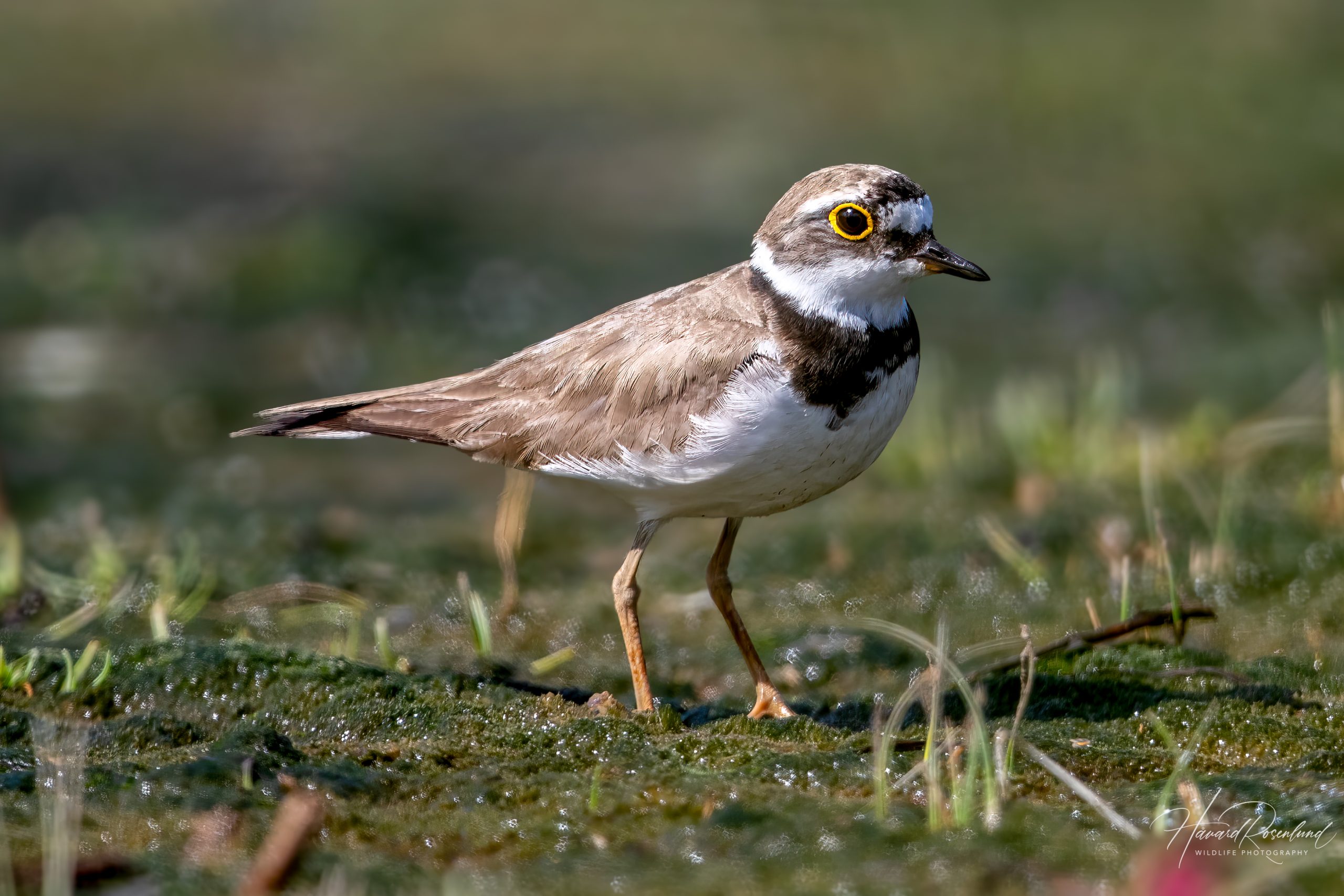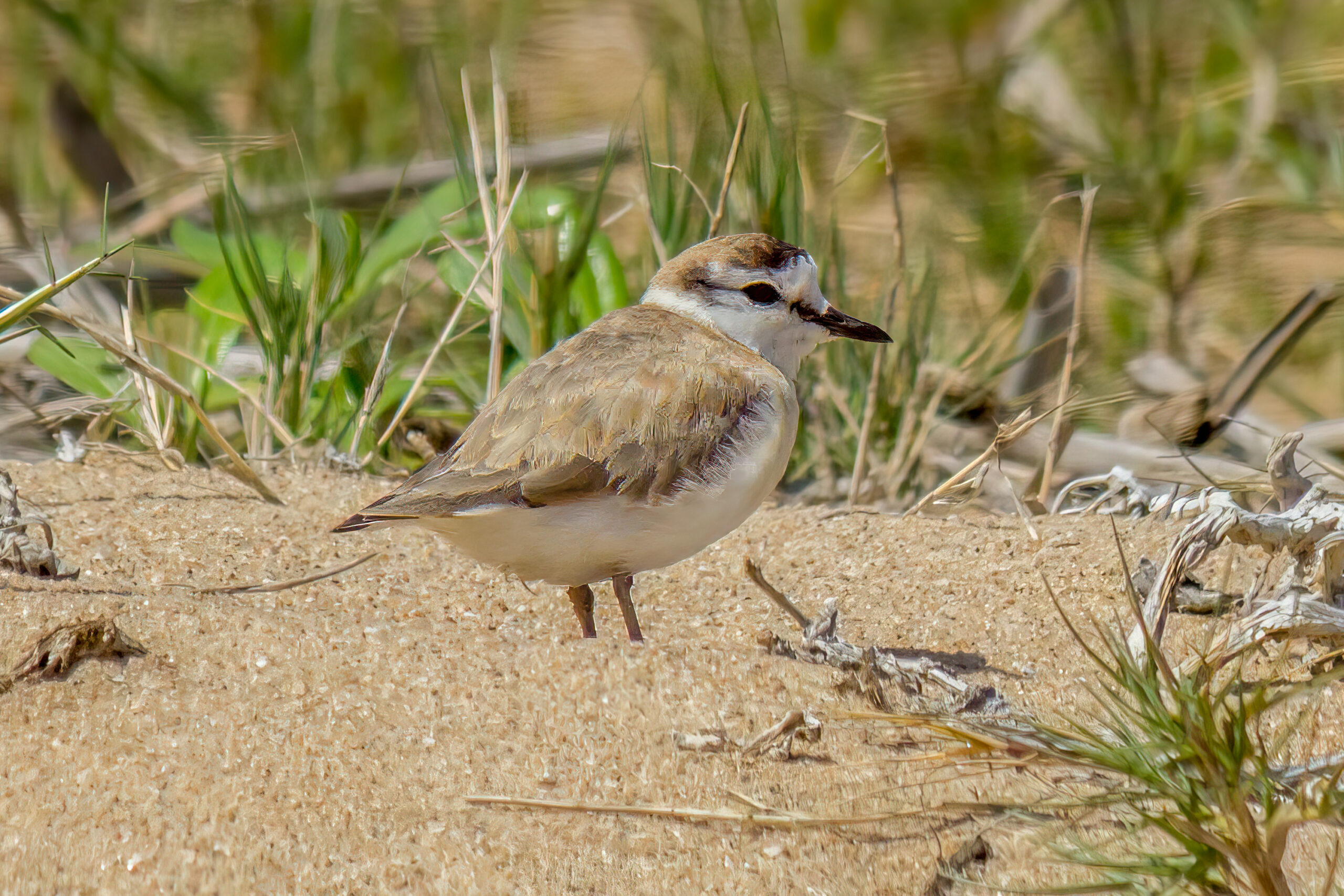Description
The little ringed plover (Charadrius dubius) is a small wader with a range that extends across Europe and Asia, with populations also present in parts of North Africa. It measures about 14-17 cm (5.5-6.7 in) in length, with a wingspan of 42-48 cm (16-19 in), and weighing between 25-55 grams (0.9-1.9 oz). This bird is distinguished by its distinctive yellow eye-ring, black bill, and a pale brown upper body with a white underside. The legs are flesh-colored, and it has a characteristic black breast band. The little ringed plover can be confused with the common ringed plover (Charadrius hiaticula). The yellow eye-ring, mostly black bill and smaller size of the little ringed plover are key differences. The little ringed plover’s calls are also higher-pitched compared to the common ringed plover.
Diet & habitat
The little ringed plover inhabits a variety of open landscapes near water, including gravel and sand banks, mudflats, and the shores of rivers, lakes, and reservoirs. It is less commonly found in coastal areas compared to the common ringed plover. This species feeds on a diet primarily composed of insects, worms, and other small invertebrates. It uses a unique foraging technique, known as “run-and-pause,” where it runs a short distance, stops to scan for prey, and then pecks at the ground to capture its food. This method allows the plover to cover a large area efficiently while foraging.
Migration
The little ringed plover is a migratory bird. European and Asian populations typically migrate south to Africa and South Asia for the winter, while some populations in milder climates may be resident year-round. Migration usually occurs in two major periods: from July to September (autumn migration) and from March to May (spring migration). During migration, they may travel in small flocks and often stop over at wetlands to rest and feed.
Nesting
Breeding occurs from April to August, with the exact timing varying by geographic location. The little ringed plover nests on the ground in open areas with minimal vegetation. The nest is a simple scrape in the sand or gravel, sometimes lined with small stones or bits of vegetation.
Females typically lay 3-4 eggs, which are incubated by both parents for about 24-28 days. The chicks are precocial, meaning they are born with their eyes open and are covered in down. They leave the nest shortly after hatching and are able to feed themselves almost immediately, although they remain under the protection and guidance of their parents. Fledging occurs approximately 24-27 days after hatching.
Status
The little ringed plover is classified as least concern by the IUCN. While it is not currently considered threatened, it faces challenges from habitat loss and degradation, particularly due to human activities such as riverbank development, pollution, and recreational disturbances. Conservation efforts focus on protecting breeding and foraging habitats to ensure the species’ continued stability.









